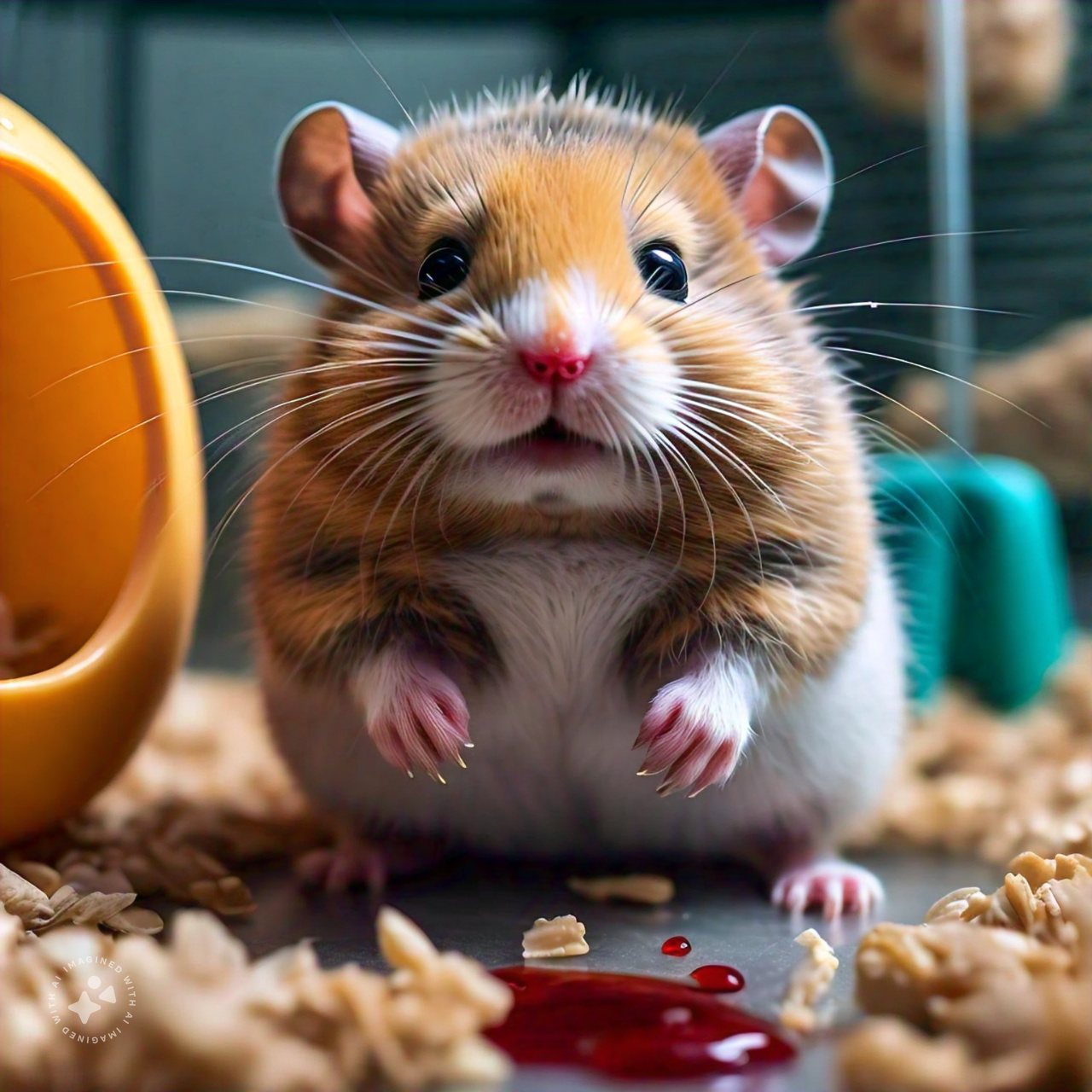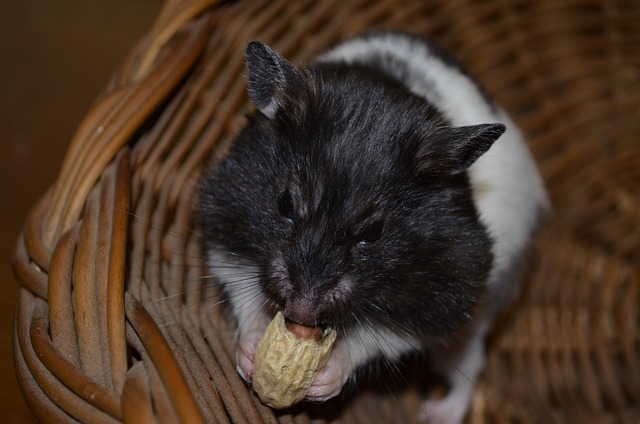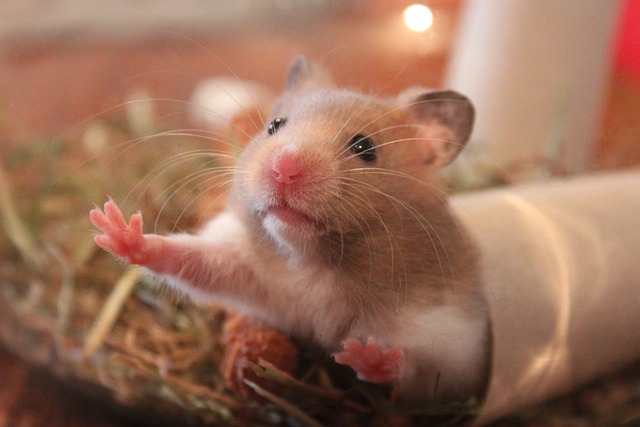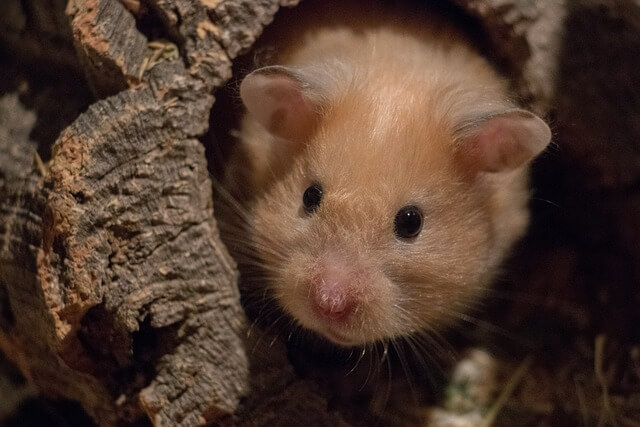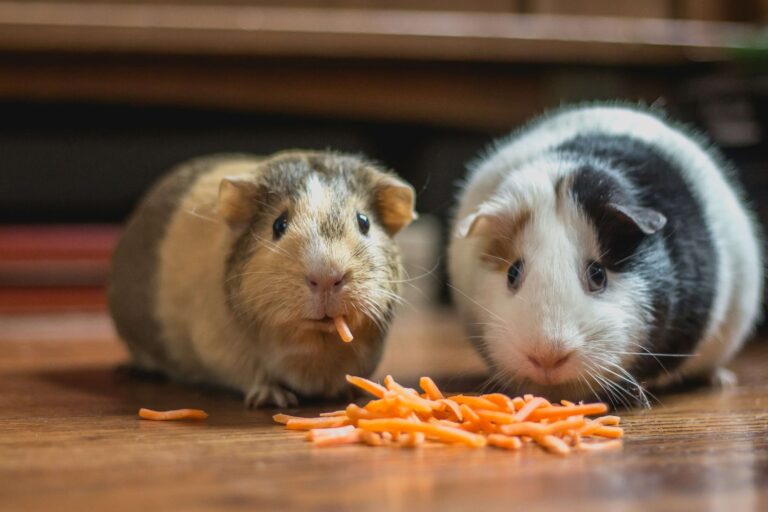Why Is My Hamsters Nose Bleeding – hamsters.pk
Understanding the Causes of Nasal Bleeding in Hamsters
Nasal bleeding in hamsters can be a distressing sign for any pet owner. It is crucial to understand the potential causes and appropriate responses to ensure the well-being of these small, delicate animals. This article explores various reasons why a hamster might experience nasal bleeding, providing insights to help you address and prevent such incidents.
Initial Considerations: Recognizing Nasal Bleeding in Hamsters
Before diving into the causes, it’s important to confirm that what you’re seeing is indeed nasal bleeding. Sometimes, what appears to be blood may actually be a red-colored secretion called “porphyrin,” which is not blood but an indication that the hamster might be stressed or ill. If it’s actual bleeding, you’ll want to observe the amount and frequency, as these details can be critical for diagnosis and treatment.
Common Causes of Nasal Bleeding in Hamsters
Trauma or Injury
One of the most common reasons for a hamster’s nose to bleed is physical trauma. This can occur if the hamster falls, is mishandled, or hits its nose against the cage or other hard objects. Inspecting the hamster’s living environment for any hazards and observing their behavior can help minimize these risks.
Respiratory Infections
Respiratory infections can cause inflammation and congestion in the nasal passages, leading to bleeding. Symptoms accompanying the bleeding might include sneezing, wheezing, or difficulty breathing. These infections could be bacterial or viral and require prompt veterinary attention.
Foreign Bodies
Small particles like bedding material or food can sometimes get lodged in a hamster’s nasal passages. This irritation can lead to scratching or digging at the nose, causing bleeding. Regular cage cleaning and choosing appropriate bedding can help prevent this issue.
Tumors or Polyps
Although less common, tumors or polyps in the nasal passages or sinuses can lead to bleeding. These growths can be benign or malignant and often require surgical intervention. Monitoring any additional symptoms like facial swelling or asymmetry can be crucial.
Diagnosing Nasal Bleeding
When you notice your hamster’s nose is bleeding, it is advisable to consult with a veterinarian. They can perform a physical examination, possibly supplemented by imaging tests like X-rays, to determine the exact cause of the bleeding.
Immediate Actions and Veterinary Care
If your hamster’s nose starts bleeding, try to keep your pet calm and gently wipe away the blood with a clean, damp cloth. Avoid using any over-the-counter medications or home remedies without consulting a vet. Securing prompt and professional veterinary care can make a significant difference in the outcome for your pet.
Prevention Tips
To prevent nasal bleeding, ensure that your hamster’s cage is safe, spacious, and free from sharp edges. Regularly clean the habitat and replace bedding to keep the environment dust-free and hygienic. Also, providing a balanced diet and proper enrichment can help keep your hamster healthy and less prone to accidents and illnesses.
In conclusion, nasal bleeding in hamsters can stem from several causes, each requiring a specific approach in terms of diagnosis and treatment. By understanding these potential causes and taking preventative measures, you can help ensure a healthier and happier life for your furry friend.
Common Health Concerns: When to Worry About Your Hamster’s Nosebleed
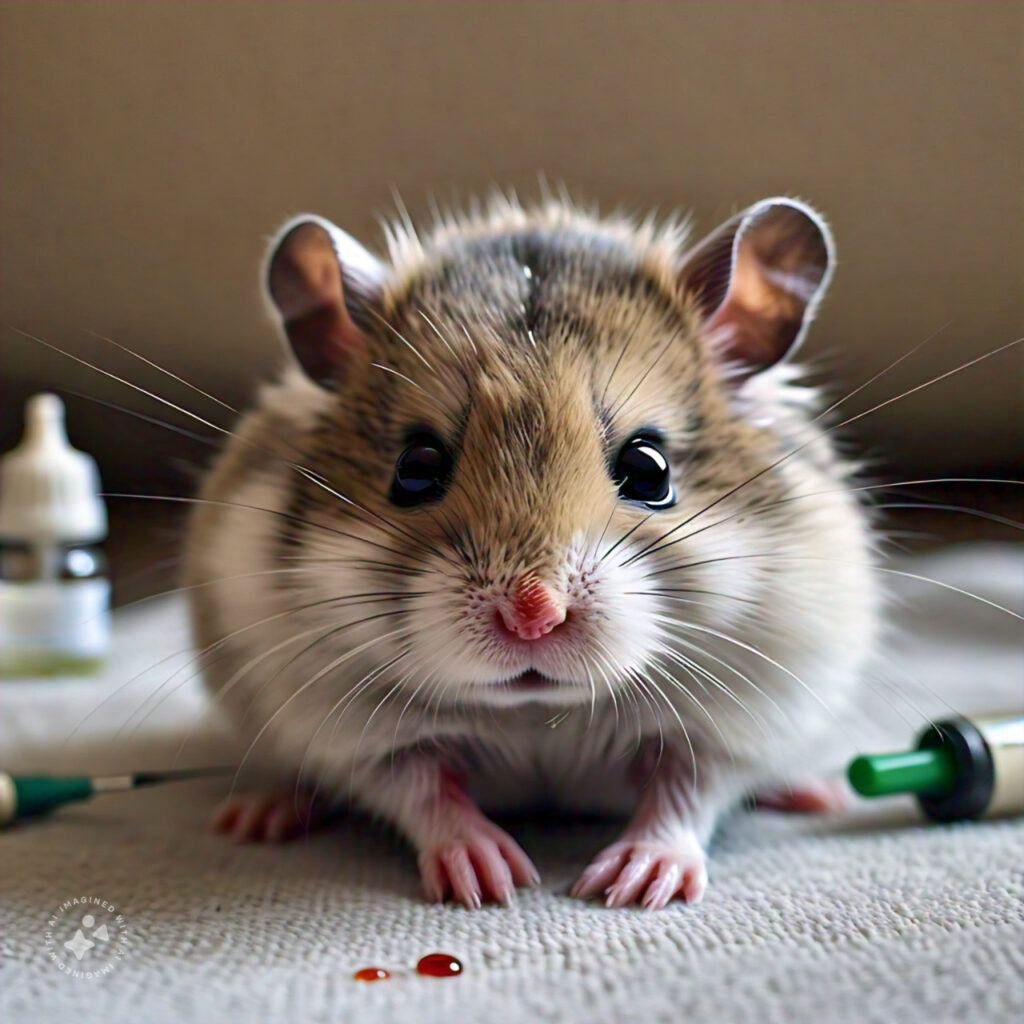
Hamsters are small, adorable pets that are generally easy to care for. However, like any other pet, they can sometimes face health issues, one of which is nosebleeds. It’s important to understand when a nosebleed is a sign of a minor issue and when it could indicate a more serious health concern.
Identifying the Causes of a Hamster’s Nosebleed
The first step in addressing your hamster’s nosebleed is to identify the potential causes. Some common reasons for a hamster to experience a nosebleed include:
- Trauma: A fall from a height or a rough handling can cause physical injury to your hamster’s nose.
- Environmental irritants: Substances like strong perfumes, smoke, or dust can irritate the delicate nasal passages of a hamster.
- Foreign objects: Small particles like bedding materials can sometimes get lodged in the nasal passages.
- Infections or diseases: Respiratory infections or tumors can also lead to nosebleeds in hamsters.
When to Worry About Your Hamster’s Nosebleed
Not every nosebleed is a cause for panic, but some situations require immediate attention:
- Frequency and volume: If the nosebleed is heavy or occurs frequently, it’s a sign that something more serious may be at play.
- Accompanying symptoms: Be alert to other signs of illness such as lethargy, breathing difficulties, or changes in appetite.
- Unusual behavior: If your hamster seems more aggressive or unusually withdrawn, it could be in pain or distress.
Steps to Take if Your Hamster Has a Nosebleed
If you notice that your hamster has a nosebleed, there are several steps you should take:
- Minimize stress: Keep your hamster calm and quiet as stress can exacerbate the bleeding.
- Check the environment: Ensure that there are no irritants that could be causing the nosebleed.
- Consult a vet: If the nosebleed does not stop or if it recurs, it’s important to consult a veterinarian who specializes in small animals.
Preventing Future Nosebleeds
Prevention is always better than cure. To minimize the risk of nosebleeds in your hamster, consider the following tips:
- Safe handling: Always handle your hamster gently to avoid injuries.
- Clean environment: Regularly clean your hamster’s cage and replace bedding to keep it free from dust and other irritants.
- Monitor health: Regular check-ups with a vet can help catch and address any underlying health issues before they become serious.
Understanding the causes and knowing when to seek help are crucial in managing your hamster’s health effectively. By taking proactive steps and monitoring your pet’s well-being, you can ensure a happier, healthier life for your furry friend.
First Aid for Hamsters: Steps to Take When You Notice a Nosebleed
Discovering that your hamster has a nosebleed can be alarming, but with the right knowledge and swift action, you can help manage the situation effectively. This guide will walk you through the essential steps to take if you find your hamster suffering from a nosebleed, helping you provide the best first aid possible.
Identify the Cause
Before you can effectively treat your hamster’s nosebleed, it’s crucial to try and understand what caused it. Common causes include trauma from a fall or bump, irritation from dust or bedding materials, or even more severe health issues like tumors or blood disorders. Observing any other unusual behaviors or symptoms can also provide important clues.
Stay Calm and Gently Restrict Movement
Hamsters are small and delicate animals, and stress can exacerbate their condition. It’s important to stay calm and handle your pet gently. Restrict your hamster’s movement without causing additional stress to prevent further injury.
Apply Gentle Pressure
Using a clean, soft cloth, apply gentle pressure to your hamster’s nose. This can help manage the bleeding. Be very gentle as their noses are extremely sensitive and delicate.
Assess the Situation
As you apply pressure, observe the intensity and duration of the bleeding. A minor nosebleed should stop within a few minutes. If the bleeding does not stop, continues to recur, or if your hamster seems unusually lethargic or sick, it is a sign that you need to seek professional help.
Consult a Veterinarian
If the nosebleed is severe or doesn’t stop after a few minutes of pressure, or if your hamster shows other signs of distress, consult a veterinarian immediately. Nosebleeds can be symptomatic of serious health issues that require professional treatment.
Prevent Future Nosebleeds
Once the immediate crisis is over, take steps to prevent future nosebleeds. Evaluate your hamster’s living environment for any potential hazards or irritants. Ensure that the bedding is dust-free and that there are no sharp objects that could cause injury. Also, maintaining a quiet, stress-free environment is crucial for your hamster’s overall health.
Monitor Your Hamster
After the incident, keep a close watch on your hamster for a few days to ensure there are no further issues or recurrence of the nosebleed. Monitoring their behavior and physical health helps in early detection of any underlying problems.
By understanding these steps and being prepared to act quickly, you can ensure that you are providing the best care for your hamster in a nosebleed emergency. Remember, when in doubt, professional veterinary assistance is crucial.
Preventive Measures: Keeping Your Hamster Healthy and Safe
Keeping your hamster healthy and safe is essential for ensuring a long, happy life for your furry friend. This article explores several key preventive measures that every hamster owner should follow. From maintaining a proper diet to ensuring a secure environment, these tips will help you minimize health risks and enhance your hamster’s well-being.
Regular Health Checks
Regular health checks are crucial for early detection of potential health issues. Even though hamsters are small, they are not immune to health problems. Schedule regular veterinary visits to monitor their health and catch any signs of illness early. Between visits, keep an eye on their behavior, appetite, and physical appearance for any changes.
Optimal Diet and Nutrition
Feeding your hamster a balanced diet is paramount. Hamsters thrive on a diet of high-quality hamster pellets, fresh fruits and vegetables, and occasional treats of nuts and seeds. Avoid sugary and fatty foods to prevent diabetes and obesity. Always provide fresh water and check daily to ensure that your hamster’s water bottle is working properly.
Safe and Stimulating Environment
Creating a safe living space is essential for your hamster’s physical and mental health. Use a spacious cage with proper ventilation, and avoid small wire cages where limbs can get trapped. Include tunnels, wheels, and chew toys to keep your hamster engaged and active. Regularly clean the cage with pet-safe disinfectants to prevent the buildup of harmful bacteria.
Exercise and Enrichment
Exercise is vital for your hamster’s health. Ensure that their cage includes a running wheel and space for them to move freely. Interaction with your hamster through gentle handling can also provide mental stimulation and strengthen your bond. However, handle your hamster with care to prevent stress and injury.
Avoiding Common Hazards
Be proactive in safeguarding your hamster from common dangers. Keep their cage away from direct sunlight, drafts, and loud noises. Check that all cage accessories are secure and free from sharp edges. Be cautious with other pets in the household that might see your hamster as prey.
By following these preventive measures, you can create a nurturing environment that promotes health and happiness for your hamster. Remember, a well-cared-for hamster is a joyful companion, so invest time and effort into their well-being.

